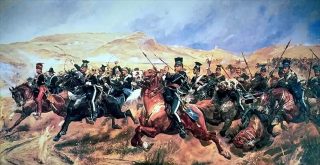On August 11, 1984, the USA Men’s Olympic Volleyball Team faced off against Brazil for a gold medal at the Los Angeles Olympics. The coach of the U.S. Team, Doug Beal, arrived at the arena hours before the match. Joining him was his assistant coach and best friend, Bill Neville. The players would arrive later, closer to game time. They walked into a mostly empty arena. In a few hours it would be a madhouse, but at the moment it was quiet. The two men sat in the empty stands. They reflected on the long journey that had brought them to this moment. They used the calm and solitude to mentally prepare themselves for the biggest match of their lives.
When the players arrived, Neville took them to the warm-up area to lead them through the pre-match routine. Beal wanted to be alone with his thoughts. He waited silently in the locker room.
As I reflected on this story recently, it occurred to me that these profound moments of solitude are so rare today. If the match were held today, would Beal mentally prepare the same way? With smart phones in our pockets, and the need to be constantly available, these moments of solitude have been squeezed from our lives.
In 2009, William Deresiewicz, addressed the plebe class of the United States Military Academy at West Point. His speech was titled Solitude & Leadership. Deresiewicz warns about the dangerous and seductive nature of multitasking. The tyranny of being busy all the time:
Multitasking, in short, is not only not thinking, it impairs your ability to think. Thinking means concentrating on one thing long enough to develop an idea about it. Not learning other people’s ideas, or memorizing a body of information, however much those may sometimes be useful. Developing your own ideas. In short, thinking for yourself. You simply cannot do that in bursts of 20 seconds at a time, constantly interrupted by Facebook messages or Twitter tweets, or fiddling with your iPod, or watching something on YouTube.
I find for myself that my first thought is never my best thought. My first thought is always someone else’s; it’s always what I’ve already heard about the subject, always the conventional wisdom. It’s only by concentrating, sticking to the question, being patient, letting all the parts of my mind come into play, that I arrive at an original idea. By giving my brain a chance to make associations, draw connections, take me by surprise. And often even that idea doesn’t turn out to be very good. I need time to think about it, too, to make mistakes and recognize them, to make false starts and correct them, to outlast my impulses, to defeat my desire to declare the job done and move on to the next thing.
In the book, Lead Yourself First, the authors Raymond M. Kethledge and Michael S. Erwin make a great case for the importance of solitude for leadership, and the conviction it requires to create space for solitude in our lives today. The authors define solitude as “a state of mind, in which the mind, isolated from the input of other minds, works through a problem on its own.” The practice of solitude gives leaders the mental freedom to independently determine their ultimate goals and objectives. Without solitude we will almost certainly fall prey to mindless mimicry of others. In addition, solitude gives leaders “the clarity, conviction of purpose and moral courage” to sustain an effort through the inevitable adversity and challenges that will arise.
While building Nike in the 1970s, Phil Knight, made a habit of running six miles almost every evening after work. Although he was a competitive runner in college, the practice at that point in his life was mainly about solitude. Running was his time to reflect on the day, calm his emotions and let his intuition make connections. At the time, Nike sales were doubling every year, and so was the stress in Phil’s life. He had a growing family and an expanding business, and both were demanding more and more of his time. Knight’s six-mile runs became a ritual, a sort of meditation, giving his mind the space to reflect on the day, process decisions and dream of the future.
“At the close of those difficult days, it was my nightly six-mile run that saved my life.”
Later in Knight’s career, when the need for capital became more intense, the prospect of going public was raised, and he resisted it. He imagined thousands of investors growing angry at the first sign that Nike might miss quarterly expectations. Gradually, on his nightly six-mile run, he began to view going public in a new light – a way to connect with more people:
“During my nightly run, I’d sometimes ask myself, hasn’t your life been a kind of search for connection? Running for Bowerman, backpacking around the world, starting a company, marrying Penny, assembling this band of brothers…hasn’t it all been about, one way or another, going public”
Charlie Munger and Warren Buffett credit much of their success at Berkshire Hathaway to their ability to block out distractions and just have time to think. Munger has said, “We schedule time to think. Most people schedule themselves like a dentist and their happiest day is when they can manage to squeeze in one additional 10 minute appointment. I think you have to have time to think. And it’s so easy to get so busy that you no longer have time to think – and you pay a huge price for that.”
Fight back against your smart phone and the tyranny of multi-tasking. Schedule time to think. Your leadership depends on it.
Sources:
William Deresiewicz: Leadership & Solitude
Kethledge & Erwin: Lead Yourself First
Phil Knight: Shoe Dog
Peter Bevelin: All I Want to Know is Where I’m Going to Die So I’ll Never Go There
About the Author
Sean P. Murray is an author, speaker and consultant in the areas of leadership development and talent management. Learn more at RealTime Performance.
Follow Me on Twitter: @seanpmurray111
Join my mailing list and be updated when I publish new articles.


[…] Leadership & Solitude: Scheduling Time to Think by Sean P. Murray […]